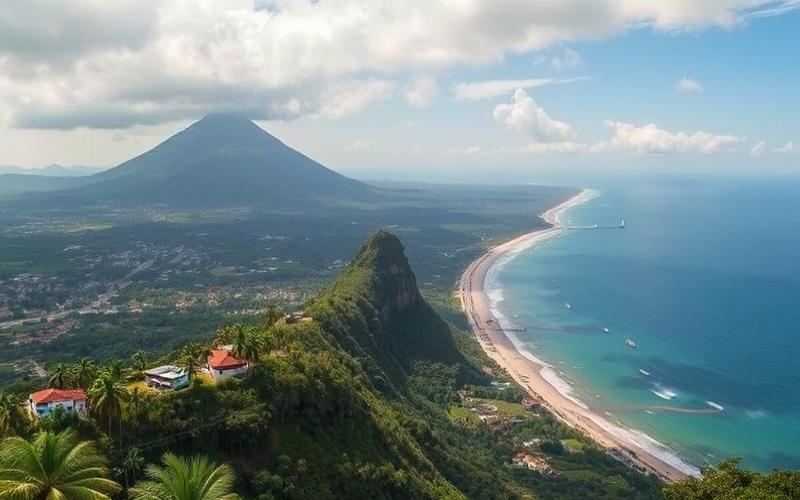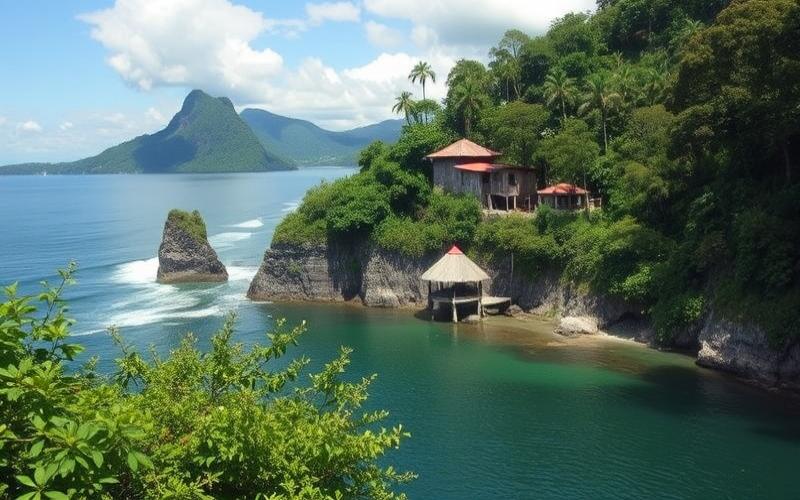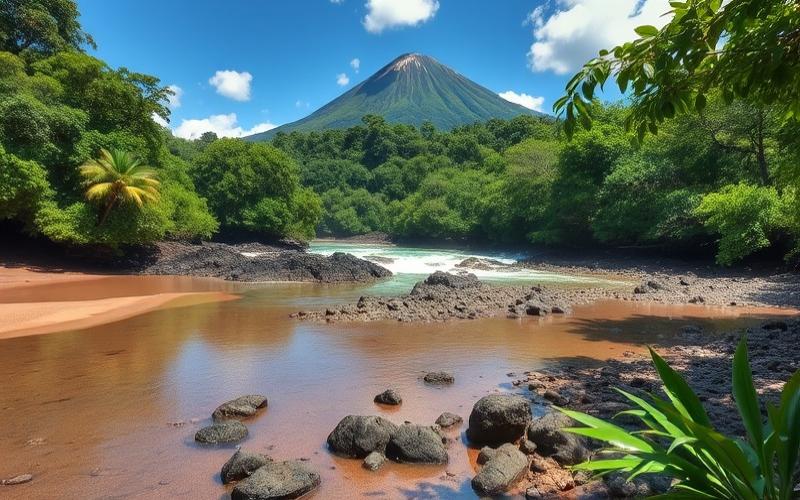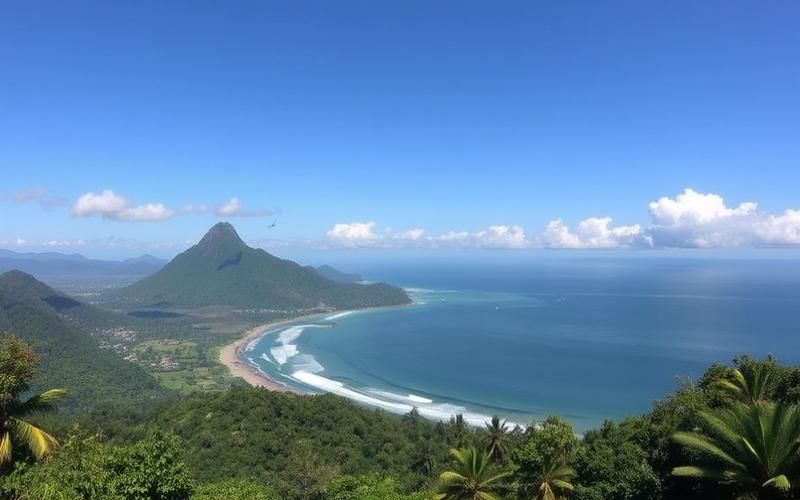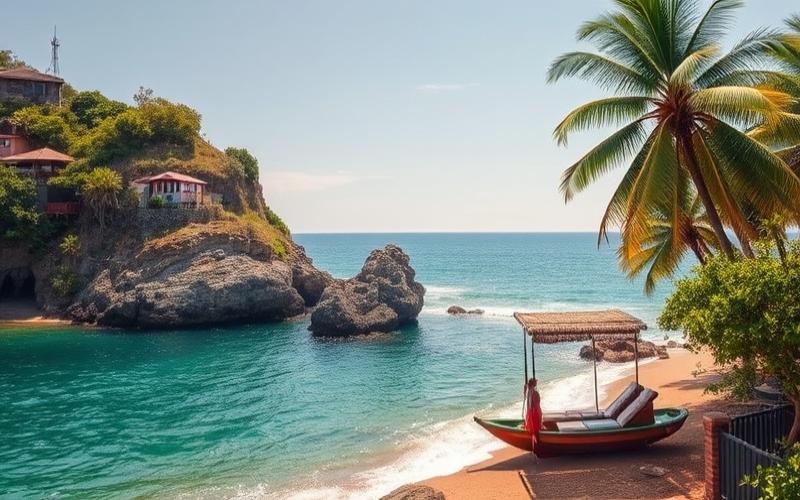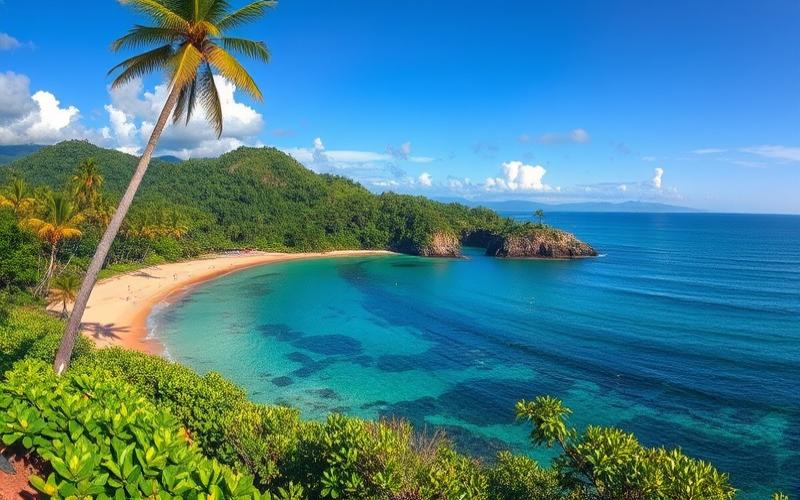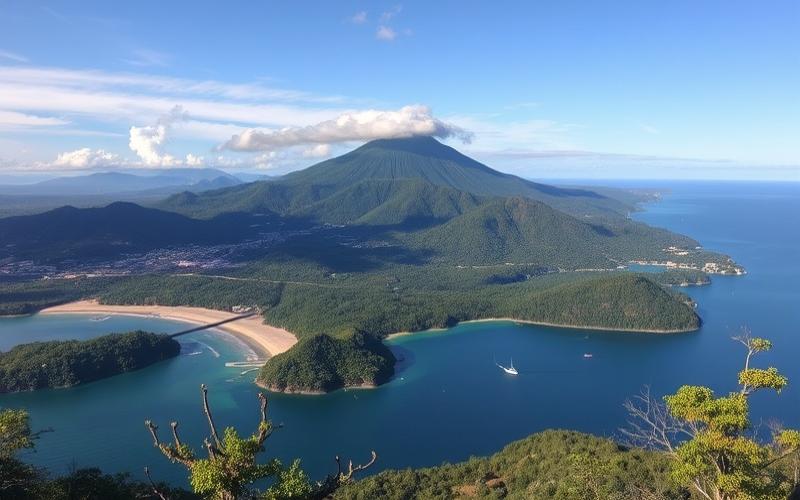
 Published on and written by Cyril Jarnias
Published on and written by Cyril Jarnias
Investing in Costa Rica Real Estate with Leverage
Investing in Costa Rica real estate can offer profitable opportunities through the strategic use of leverage, a preferred method for maximizing financial returns while minimizing risks.
This Central American country, with its breathtaking natural landscapes and favorable policies for foreign investors, is attracting more and more buyers looking to diversify their portfolios.
By understanding how to leverage external financing to acquire promising real estate properties, you can not only increase your wealth but also take advantage of this expanding market.
Discover how to harness this powerful financial tool to turn your ambitions into tangible success in the Costa Rican real estate universe.
Good to Know:
Costa Rica offers attractive tax benefits for foreign investors, including no capital gains tax on real estate after 5 years of ownership.
Understanding Leverage in Costa Rica Real Estate
Definition
Leverage in real estate refers to the mechanism of using bank loans to finance an investment, thereby increasing purchasing capacity and generating income or capital gains greater than what would have been possible with one’s own funds alone. This translates to the ability to acquire larger properties, diversify one’s portfolio, and increase wealth without mobilizing all of one’s savings.
Application in Costa Rica
In Costa Rica, leverage works on the same principle but is influenced by several local specificities:
- Interest rates for real estate loans can be higher than in other mature markets, typically ranging between 7% and 12% for non-residents.
- Credit accessibility heavily depends on the investor’s status (resident, non-resident, company) and the policies of local banks, which often require a significant down payment (sometimes 30% to 50% of the property price).
- Loan approval conditions are strict, with thorough checks on fund sources and repayment capacity.
Advantages of Leverage for Investors in Costa Rica
- Acquisition of Higher-Value Properties: Ability to invest in premium properties (beachfront, tourist areas) without tying up all capital.
- Profitability Optimization: When rental yield exceeds the cost of credit, the investor benefits from a net financial gain.
- Accelerated Wealth Building: Investing with credit allows for multiple operations and faster portfolio growth.
Specific Risks in Costa Rica
- Credit Cost: High rates can reduce or even cancel the positive effect of leverage if the property’s profitability is insufficient.
- Exchange Rate Risk: For foreign investors borrowing in colón (local currency) while their income is in dollars or euros.
- Fluctuating Regulations: Possible evolution of regulations on credit approval or real estate taxation.
- Market Liquidity: Some segments (rural or less touristy areas) may be less liquid, extending resale timelines.
Comparative Table: Advantages and Risks of Leverage in Costa Rica
| Advantages | Risks |
|---|---|
| Acquisition of larger properties | High interest rates |
| Profitability optimization | High required down payments |
| Rapid portfolio building | Exchange rate risk for non-residents |
| Asset diversification | Rigid credit access |
| Multiplier effect on income | Regulatory fluctuations |
Concrete Examples of Leverage Usage
Case of a Foreign Investor: An American expatriate purchases an apartment in Tamarindo for $300,000. They contribute $120,000 (40%) and finance the remainder with a local loan at 9%. The property is rented weekly to tourists, generating a gross yield of 11%. After loan repayment and expenses, the net profitability remains higher than the credit cost, enabling wealth building with limited savings effort.
Local Seasonal Rental Company: A Costa Rican company specializing in tourist rentals acquires several beachfront villas through bank financing, taking advantage of high tourist demand. Leverage allows them to multiply acquisitions and increase overall profitability while pooling risks.
Economic and Political Factors Influencing Leverage Effectiveness
- Tourism Growth: The health of the tourism sector determines rental profitability, hence the appeal of leverage.
- Political Stability: Costa Rica is known for stability, but any political changes affecting taxation or banking regulations could impact credit access and investment profitability.
- Interest Rate Evolution: A rate increase raises credit costs and diminishes leverage effect.
- Foreign Investment Regulations: Changes in property or loan access for foreigners can increase or restrict opportunities.
Key Takeaways
Real estate leverage in Costa Rica allows for acquiring and valuing properties without mobilizing all capital, but it is imperative to carefully assess interest rates, required down payment, market liquidity, and local economic or regulatory risks.
Good to Know:
Leverage in Costa Rican real estate involves using borrowed funds to increase investment capacity, with the potential advantage of generating higher returns. This mechanism is attractive due to often lower interest rates compared to other countries, facilitating credit access for investors, although local regulations require strict due diligence. A notable example is an American company that acquired multiple properties in tourist regions through such leverage, capitalizing on tourism growth. However, investors must be cautious of risks such as interest rate fluctuations and potential changes in economic policies influenced by local political variations. These factors make the environment less predictable, directly affecting the profitability of leveraged investments.
Strategies for Smart Real Estate Debt Management
To adopt a smart debt strategy in Costa Rican real estate, it is essential to combine a deep understanding of the local market, suitable financing options, and rigorous risk management.
Understanding the Local Real Estate Market
- Study trends: prices, demand dynamics (tourism, expatriation), rental profitability.
- Identify high-potential areas (Pacific coast, central valley…) to maximize capital appreciation.
- Research local regulations regarding acquisition by foreigners.
Interest Rates and Available Loan Types
| Loan Type | Typical Interest Rate | Term | Down Payment Required |
|---|---|---|---|
| Bank Mortgage Loan | 7% – 10% | 15 to 30 years | From 15% |
| Seller Financing | 6% – 8% | 3 to 5 years | 30–50% |
| Private / Hard Money Loans | Above average bank rates | Short term | Variable |
- Local banks generally impose a minimum down payment and require solid guarantees.
- Seller financing often offers more flexibility but requires a formalized legal agreement.
- Home equity lines of credit obtained in the country of origin are sometimes used to purchase properties outright in Costa Rica.
Concrete Strategies for Using Leverage
Example 1: Progressive Purchase with Resale or Rental
- Use seller financing to quickly acquire land or a house with a substantial initial contribution.
- Rent the property during the loan term so that rental income covers all or part of the monthly payments.
- Resell after a few years when the value has increased or refinance through a local bank if credit access has improved.
Example 2: Diversification via Multi-Source Borrowing
- Obtain a conventional mortgage to finance up to the limit permitted by local borrowing capacity.
- Supplement financing with a home equity line of credit obtained in your country of origin (e.g., margin on primary residence).
- Invest in several geographically diversified properties to mitigate risks related to regional fluctuations.
Example 3: Quick Private Financing (“Hard Money”) for Opportunistic Deals
- Temporarily resort to a private/hard money lender for opportunities requiring quick action (public auction, urgent sale).
- Quickly improve/enhance the property then refinance with a traditional institution or resell for profit.
Prudent Management of Associated Risks
- Never commit more than your personal financial situation could handle in case of a market downturn.
- Always plan for sufficient financial margin against possible variations in local variable rates and currency fluctuations if income is received in foreign currencies.
- Ensure with a specialized lawyer that a mortgage guarantee (“hipoteca”) is properly registered during alternative financing like seller financing.
Collaboration with Local Advisors: Key Asset
- Facilitated access to local banking partners suited to foreign investor profiles
- Personalized advice according to Costa Rican taxation; optimization between property tax, rental income tax, and inheritance rights
- Total legal security during complex transactions
Key Takeaway:
Success relies as much on mastering the technical aspects of financial leverage as on thorough analysis of the Costa Rican context and local professional support, thus ensuring security and sustainable performance in your international real estate investments.
Good to Know:
For smart debt management in Costa Rican real estate, it is crucial to master the specificities of the local market and carefully analyze interest rates and available loan options, such as mortgages in colóns or U.S. dollars. Collaborating with local financial advisors can help you navigate complexities like specific tax regulations, thus optimizing your leverage strategy. Successful strategies include purchasing properties in high-growth potential areas, using fixed-rate loans to secure your costs and minimize risks related to currency fluctuations. For example, some investors choose to reinvest rental profits into accelerated principal repayment, which can reduce long-term interest costs.
Optimizing Your Return on Investment Through Leverage
Specific Methods to Maximize Real Estate ROI in Costa Rica Through Leverage
- Use Local Bank Financing: Several Costa Rican banks (Banco Nacional, Banco de Costa Rica) offer mortgages to foreigners, although the required down payment often varies between 30% and 50% of the purchase price. Interest rates typically range between 7% and 9%, depending on the investor’s profile and loan term.
- Utilize Seller Financing: Many sellers, particularly in sought-after areas like Santa Teresa, offer direct financing options. This often allows for negotiating more flexible terms and accessing properties without the administrative burden of banks.
- Leverage in Negotiation: Cash purchases or quick financing enable negotiating more attractive prices, which improves return on equity.
- Investment in High Appreciation Potential Areas: Prioritize regions experiencing strong growth like Guanacaste, Nosara, or Santa Teresa, where prices have seen spectacular increases (sometimes over 400% in a few years), allowing full benefit of leverage upon resale.
Tax Advantages and Favorable Financial Policies
- Real Estate Capital Gains Exemption: Up to three real estate sales per year, capital gains are not taxed, maximizing the investor’s net return.
- Limited Acquisition Fees: Acquisition costs range between 4.38% and 7.38%, and rights and duties are identical for foreigners and locals.
- Simplified Formalities: Administrative procedures are relatively straightforward, facilitating market entry for foreign investors.
Concrete Examples of Available Financing
| Financing Type | Interest Rate | Initial Down Payment | Typical Term | Main Conditions |
|---|---|---|---|---|
| Local Bank Loan | 7% to 9% | 30% to 50% of price | 10 to 25 years | Income verification, strong application |
| Seller Financing | Negotiable | 20% to 50% of price | 2 to 5 years | Flexibility on term and conditions |
| International Financing | 8% to 12% | 30% to 40% of price | 5 to 20 years | Often via offshore or private banks |
Potential Risks Associated with Leverage Use
- Market Volatility: Prices can fluctuate significantly, especially in tourist areas, which can complicate resale and reduce expected profitability.
- Exchange Rate Risk: Loans are often denominated in U.S. dollars, but depreciation of the colón or exchange rate variations can impact the effective cost of credit.
- Administrative Complexity: Obtaining loans can be lengthy and demanding for non-residents, with strict requirements on income proof and fund transparency.
- Hidden Property Issues: Older properties may have undetected structural defects, increasing unexpected costs.
Strategies to Mitigate Risks
- Diversify investments across different zones or property types to limit exposure to a single market.
- Conduct thorough technical inspections before purchase, especially for older properties.
- Maintain a cash reserve for unexpected expenses or vacancy periods.
- Opt for fixed-rate financing to limit the risk of interest rate increases.
- Work with a specialized local attorney and recognized broker to secure transactions.
Practical Tips for Selecting the Most Profitable Properties and Optimizing Financing Structure
- Target high tourist demand areas (Guanacaste, Tamarindo, Santa Teresa) where occupancy rates are high and gross annual profitability can reach 7% to 17% depending on property type.
- Prioritize properties with appreciation potential (renovation, extension, conversion to seasonal rental).
- Systematically compare financing offers (local banks, sellers, international institutions) to get the best terms.
- Negotiate purchase price by highlighting quick or cash financing capability.
- Structure financing to maximize leverage without jeopardizing repayment capacity (do not exceed a debt ratio of 40% of projected rental income).
Key Takeaways
Judicious use of leverage, combined with rigorous property selection and proactive risk management, optimizes real estate returns in Costa Rica. Tax advantages and relative ease of financing access for foreigners make the country an attractive destination, provided professional and structured strategies are applied.
Good to Know:
To optimize real estate ROI in Costa Rica through leverage, it is essential to leverage local tax advantages, such as exemptions for investments in tourism or renewable energy, while using financial policies favorable to foreign investors, including low-interest mortgages offered by local banks. Flexible and diversified financing structures, including shared financing or real estate crowdfunding, can maximize gains. However, investors must be aware of potential risks related to currency fluctuations or legislative changes, and it is advisable to secure appropriate insurance and maintain ongoing economic monitoring to mitigate these risks. To select the most profitable properties, analyzing the booming tourist market and choosing strategic locations such as the Guanacaste region is crucial; professional evaluation can reveal actual profitability before any purchase.
Disclaimer: The information provided on this website is for informational purposes only and does not constitute financial, legal, or professional advice. We encourage you to consult qualified experts before making any investment, real estate, or expatriation decisions. Although we strive to maintain up-to-date and accurate information, we do not guarantee the completeness, accuracy, or timeliness of the proposed content. As investment and expatriation involve risks, we disclaim any liability for potential losses or damages arising from the use of this site. Your use of this site confirms your acceptance of these terms and your understanding of the associated risks.






